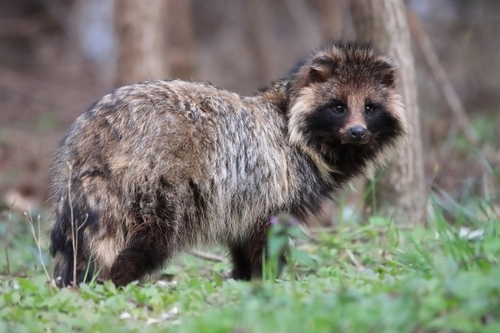
Raccoon Dog
The raccoon dog, with its striking mask-like face and plush fur, is a master of adaptation. Found in diverse habitats from dense forests to bustling cities, it plays a vital role in controlling insect populations. Its unique ability to hibernate during harsh winters sets it apart in the canine family.
3-8 years
Lifespan
45361.0 kg
Weight
Length: 50 - 65 cm
Size
Brown, Yellow, Black, Tan
Color
25 mph
Top Speed
Least Concern
Conservation Status
Stable
Population Trend
Characteristics
Nyctereutes procyonoides, commonly known as the raccoon dog, is native to East Asia. It has a distinctive thick fur, a raccoon-like face, and a bushy tail. It is known for its omnivorous diet and adaptability to various habitats, including forests and urban areas.
Distribution Range of the Raccoon Dog
Nyctereutes procyonoides, commonly known as the raccoon dog, is native to East Asia. Its geographical distribution includes countries such as Japan, China, North Korea, South Korea, and parts of Russia, particularly in the Ussuri and Amur regions of the Russian Far East.
Raccoon Dog's Habitat
Environmental Conditions
Raccoon dogs typically inhabit temperate forests, wetlands, and areas with abundant vegetation. They are well-adapted to a variety of environments, including deciduous and mixed forests, riverbanks, and agricultural areas. The climate in these regions is typically temperate with distinct seasonal changes, including cold winters and warm summers.
Ecological Niche
As omnivores, raccoon dogs have a diverse diet that includes small mammals, birds, amphibians, fruits, and insects. They are primarily nocturnal and have a unique adaptation of entering a state of torpor during exceptionally cold winters. Their ecological role includes controlling small prey populations and dispersing seeds, contributing to the balance of their ecosystems.
Copyright @ Nature Style Limited. All Rights Reserved.
 English
English